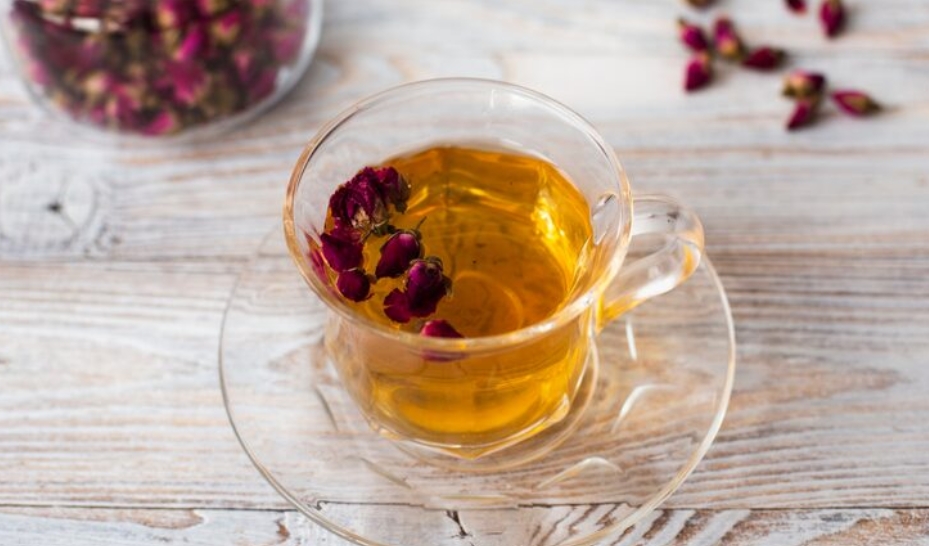When most people think about Traditional Chinese Medicine (TCM), they picture acupuncture, herbal remedies, or the concept of balancing yin and yang. But one of the most approachable and soothing aspects of TCM is tea. Among all the herbal teas used for health and wellness, rose tea holds a special place. It's not only pleasant to drink, but it has also been connected with centuries of healing traditions in China.
Origins of Rose Tea in Traditional Chinese Medicine
In TCM, flowers are more than decoration. They are often used as powerful ingredients in herbal blends. Roses, with their gentle aroma and cooling nature, were historically valued as both a symbol of beauty and a medicinal resource.
The use of roses in TCM can be traced back hundreds of years. Practitioners believed rose petals could help regulate qi, or the flow of energy in the body. Rose tea was often prescribed to support digestion, ease emotional stress, and balance the liver, which is thought to be closely linked to mood and energy in Chinese medicine.
In this sense, rose tea was not just a casual beverage. It was part of a larger philosophy about balance, harmony, and the prevention of illness.

Rose Tea and Its Healing Properties in TCM
Rose tea is considered to have a sweet and slightly bitter flavor. In TCM, flavor isn't just about taste—it connects to different functions in the body. Sweetness often nourishes and harmonizes, while bitterness can clear heat and toxins.
Here are some of the most common roles rose tea plays in TCM:
1. Supporting Digestive Health: Rose tea is often used to improve digestion. Practitioners believe it helps stimulate the stomach and spleen, making it easier to process food. This is why many people drink a cup of rose tea after a heavy meal.
2. Relieving Emotional Stress: One of the most well-known uses of rose tea in TCM is for emotional balance. It's believed to calm the liver and ease stagnation of qi. People struggling with mood swings, irritability, or mild anxiety might turn to rose tea as a natural remedy.
3. Regulating Menstrual Discomfort: Rose tea is often recommended to women experiencing irregular cycles, cramps, or discomfort. By promoting blood circulation and easing tension, it is thought to support overall reproductive health.
4. Detoxifying and Cooling the Body: In TCM, rose tea has a cooling effect, which makes it helpful for clearing excess heat in the body. This could be helpful for symptoms like sore throats, mild fevers, or skin irritation.
5. Boosting Skin Health: Because rose tea is packed with antioxidants and helps circulation, it's linked to healthier, glowing skin. In both TCM and modern wellness, it is often described as a beauty tea.
How Rose Tea Is Prepared and Enjoyed?
Drinking rose tea in China is often more than just about the flavor—it's about creating a calming ritual.
Single-flower tea: Pure rosebud tea, made only from dried rose buds, is one of the most popular forms. The buds open up in hot water, releasing both aroma and healing properties.
Herbal blends: Rose tea is often combined with other herbs such as goji berries, chrysanthemum, or green tea to enhance its effects. For example, rose and goji berry tea is popular for boosting energy and nourishing the liver.
Everyday wellness drink: Many households keep rosebud tea on hand, brewing it in glass teapots not only for health but also for the visual beauty of the flowers blooming in water.
For modern consumers, rose tea is now widely available in tea shops, online herbal tea stores, and even packaged convenience teas. Many rose tea suppliers in China export dried rose buds to international markets, making it easy to access authentic TCM-grade tea anywhere in the world.
Applications of Rose Tea Beyond Drinking
While drinking rose tea is the main way to enjoy its benefits, there are other applications:
Rose tea bath: Soaking in warm water infused with rose tea can relax muscles, improve circulation, and soften the skin.
Rose tea facial steam: Adding rose buds to hot water for a facial steam is a natural way to cleanse pores and refresh the skin.
Rose-infused recipes: Some people use rose tea as a base for cooking, adding subtle floral notes to desserts, smoothies, and even soups.
These applications expand their role from just a tea to a versatile wellness tool.
Practical Tips for Choosing and Brewing Rose Tea
When looking for rose tea, quality makes a big difference. Here are some tips:
Source from trusted suppliers – Look for companies that specialize in Chinese herbal teas or organic rose buds.
Check the color and aroma – High-quality rose tea should have vibrant pink buds and a natural floral fragrance.
Avoid additives – Pure rose tea doesn't need artificial flavors or coloring.
Brewing method – Use glass teaware to appreciate the beauty of blooming buds. Steep in hot water (around 90°C) for 3–5 minutes.
By paying attention to sourcing and preparation, you can make the most of rose tea's benefits.
Conclusion
Rose tea has been valued for supporting digestion, soothing emotions, promoting circulation, and enhancing skin health.
However, like all herbal remedies, rose tea should be used with mindfulness. While it is generally safe for most people, those who are pregnant, breastfeeding, taking medications, or dealing with specific health conditions should consult a qualified TCM practitioner or healthcare professional before making it a regular part of their routine.
